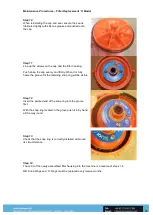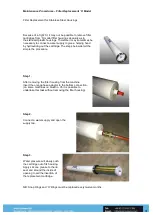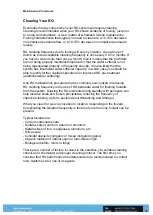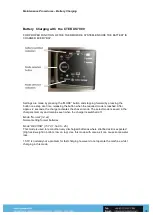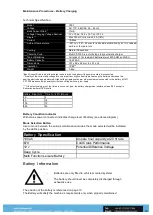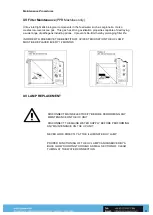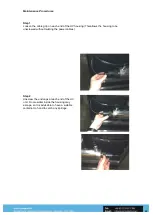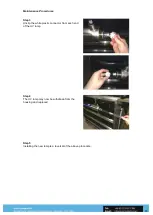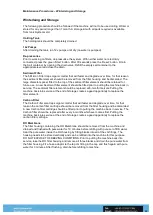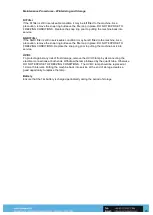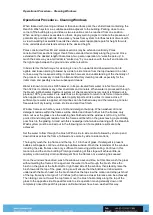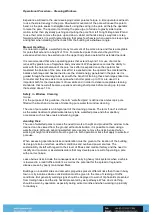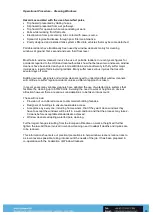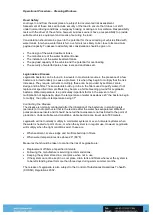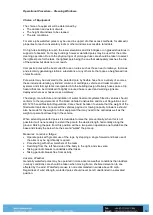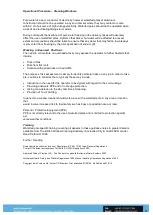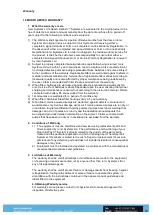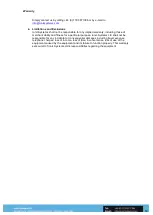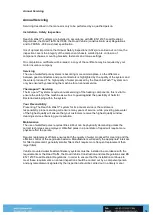
Operational Procedure – Cleaning Windows
50
Choice of Equipment
The choice of equipment will be determined by:
•
The duration and extent of work.
•
The height of windows to be cleaned.
•
The site conditions.
For some jobs waterfed poles may be used in support of other access methods, for domestic
properties to reach conservatory roofs or other windows inaccessible to ladders.
On high-rise buildings to reach the lower elevations and link bridges or on glazed structures in
support of abseilers. For many buildings however waterfed poles may be used for the entire
cleaning operation. Due to the physical rigor of prolonged use care should be taken to select
the lightest pole for the task, the lightest pole being the one that adequately reaches the top
of the window but does not over reach.
Composite poles will be best suited for use on sites such as those near to railways, factories
and electricity generating stations, substations or any other site that poses a heightened risk
of electrocution.
Pure water may be delivered to the waterfed pole by flexible hose from a variety of sources,
these include de-ionising cylinders/ columns or cartridges, vehicle and trailer mounted
systems and static systems incorporated into the building design. Delivery hoses pose a trip
hazard that can be minimised if brightly coloured hose is used and warning signs are
deployed where ever hoses cross a walkway
.
The design, manufacture and instillation of water treatment systems fitted to vehicles should
conform to the requirements of The Road Vehicle Construction and Use of Regulations and
BS: 12195 Load Restraint Regulations. Care should be taken to ensure that the weight of the
filled water tank does not exceed the vehicles payload or towing capacity
.
Allowance should
also be made for the weight of other equipment that may need to be carried as well as the
weight or personnel travelling in the vehicle.
When extending waterfed poles it is desirable to raise the pole vertically, when this is not
possible it will ne necessary to extent the pole to the desired length horizontally along the
ground. Raising the pole from this position will be a two-person operation one to stabilise the
base and steady the pole while the second “walks” the pole up.
Measures to reduce fatigue:
•
Operate poles with greater use of the legs, by stepping a single forward and back use of
the arms may be significantly reduced.
•
Pole sharing with other members of the team.
•
Switching from the left hand side of the body to the right, and visa versa.
•
Taking periodic breaks to undertake other tasks.
•
Taking periodic breaks free from activity
.
Adverse Weather
Generally waterfed poles may be operated in more adverse weather conditions than ladders.
In windy conditions care should be taken when moving from a sheltered elevation to one
affected by the wind. Waterfed pole use is not recommended in winds above 30 mph.
Regardless of wind strength, waterfed poles should never be left unattended in a elevated
position.
Summary of Contents for Zero PPB
Page 1: ...1 Operators Manual...
Page 5: ...Zero Weights Dimensions 5 Dimensions...
Page 7: ...Machine Component Identification 7 Component Identification...
Page 8: ...Machine Component Identification 8 Control Panel...
Page 10: ...Machine Component Identification 10 Zero System Filters Removed...
Page 13: ...Machine Component Identification 13 Filter Identification Zero PPB System...

